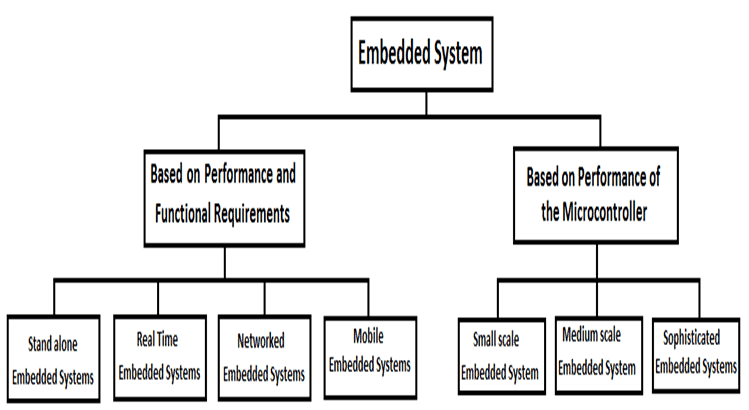Today, embedded systems are all around us like in homes, offices, cars, factories, hospitals, planes, and gadgets. It is difficult to design them properly because there are so many of them and they are getting more complex as time passes.
An embedded system is like a small computer that lives inside a larger machine. It uses a tiny brain called a microprocessor to do its job. These systems are often found inside things like appliances, cars, or industrial equipment, where they control specific tasks or functions.
This blog will explore the importance of embedded systems in daily life, various types, applications, and different challenges faced by embedded systems.
What Is An Embedded System Design (ESD)?

Embedded System Design is a special field in the engineering process. An embedded system is also known as a tiny computer. Which is specially designed to perform dedicated functions with real-time constraints that are later integrated into larger systems.
You can find embedded systems in various applications such as medical devices, industrial automation in consumer electronics, etc. Embedded systems usually have low-cost maintenance, and are highly reliable, and there are specific functionalities that are tailored to meet specific requirements. The embedded system design process can encompass various stages. It involves system design, hardware and software development, deployment, and testing.
Why Is Embedded System Design Important?
The main aim of an embedded system is to control the important functions and can control the entire operating system within the device. The processor in an embedded system can act as the brain of the system and hence, it is responsible for controlling its various functions.
Must Read:- Types Of Printed Circuit Boards Working Principles And Applications
Embedded System Design Examples
Examples of embedded systems are in industry, home appliances, medical, telecommunication, commercial, and military applications.
1. Embedded Systems In Home
Embedded systems are very helpful in homes as it was used in home security systems, washing machines, and alarm systems. The embedded systems have sensors that detect fires, toxic gases, and potential threats and hence enhance your home’s comfort. Embedded systems are used in washing machines to manage washing cycles and save time.
If you incorporate embedded systems into daily life, then it gives you comfort, saves time, increases your productivity, and gives you peace of mind.
2. Embedded System At Work
Embedded systems can be used in calculators and printers. Calculators are used to perform complex calculations and give results with accuracy. On the other hand, embedded systems are used in printers to convert the processed information into printed format. It will increase productivity and provide reliable performance at the workplace.
3. Embedded System On Road
The embedded system is very helpful for vehicles because it continuously monitors fuel levels, indicates gas levels, and estimates the distance; when fuel is low then, it gives an alarm when all the information is displayed on your vehicle’s dashboard. Moreover, it manages vehicle lighting and optimizes the vehicle’s visibility on the road.
Also Read:- What Is SCR In Power Electronics? Working, Applications, Construction
Applications Of Embedded Systems
Embedded systems are special computer systems that are built into larger devices to help them run efficiently. These systems are found in many everyday gadgets and machines, which play a crucial role in making them smart and functional. Here are some common applications where embedded systems are used:
1. Medical Equipment:
Hospitals have many devices like heart monitors that constantly check the health of patients. These devices have embedded systems that collect health data and can send it to a computer where doctors can view it. This helps the doctor without having to constantly monitor the patients.
2. Car:
Modern cars are full of embedded systems. These systems help with things like automatically adjusting speed, keeping an eye out for pedestrians to avoid accidents, assisting with parking, and managing the car’s entertainment system. This makes driving safer and more enjoyable.
3. GPS Devices:
GPS devices in cars and phones help you find your way by using signals from satellites to determine your location and speed. These devices have embedded systems that process this information to guide you to your destination.
4. Home Entertainment:
TVs and streaming devices use embedded systems to work with various cables and connect to the Internet. They can respond to your remote control, play videos from the Internet, and even suggest shows you like.
5. ATM:
When you use an ATM, the embedded system is what communicates with the bank to perform your transaction securely. It helps to verify your account details and process your cash withdrawals or deposits.
These examples show how embedded systems are a key part of many technologies that make devices smarter and our lives easier.
6. Automated Fare Collection:
When you use the bus or subway, you can pay your fare using an Automated fare collection. These machines are part of a system that includes devices such as ticket machines and gates, which use embedded systems to ensure everything runs smoothly and quickly.
7. Fitness Trackers:
Fitness trackers on your wrist count your steps, monitor your heart rate, and even track your sleep. These small gadgets have embedded systems that collect all this data and can send it to your smartphone or computer so you can monitor your health.
Further Reading:- Signal Integrity In PCB Layout (What Is, Needs, Design Considerations)
Different Challenges In Embedded Computing System Design
Embedded system design has rapidly grown. But we need to address many challenges. There are various issues, such as security, integration, system requirements, safety, and testing. To improve system performance, we must carefully address these issues for effortless integration.
In addition, Designers often choose a Discrete Circuits company for projects that require specialized chips. They use discrete company products to speed up the design process by ensuring that their designs meet specific standards for hardware and software.
Final Verdict
Embedded systems enable the effortless integration of technology into our lives. It has optimized design, reduced costs, and improved power efficiency. It improved our lives into more convenient connections to real life and improved real-life problems.



